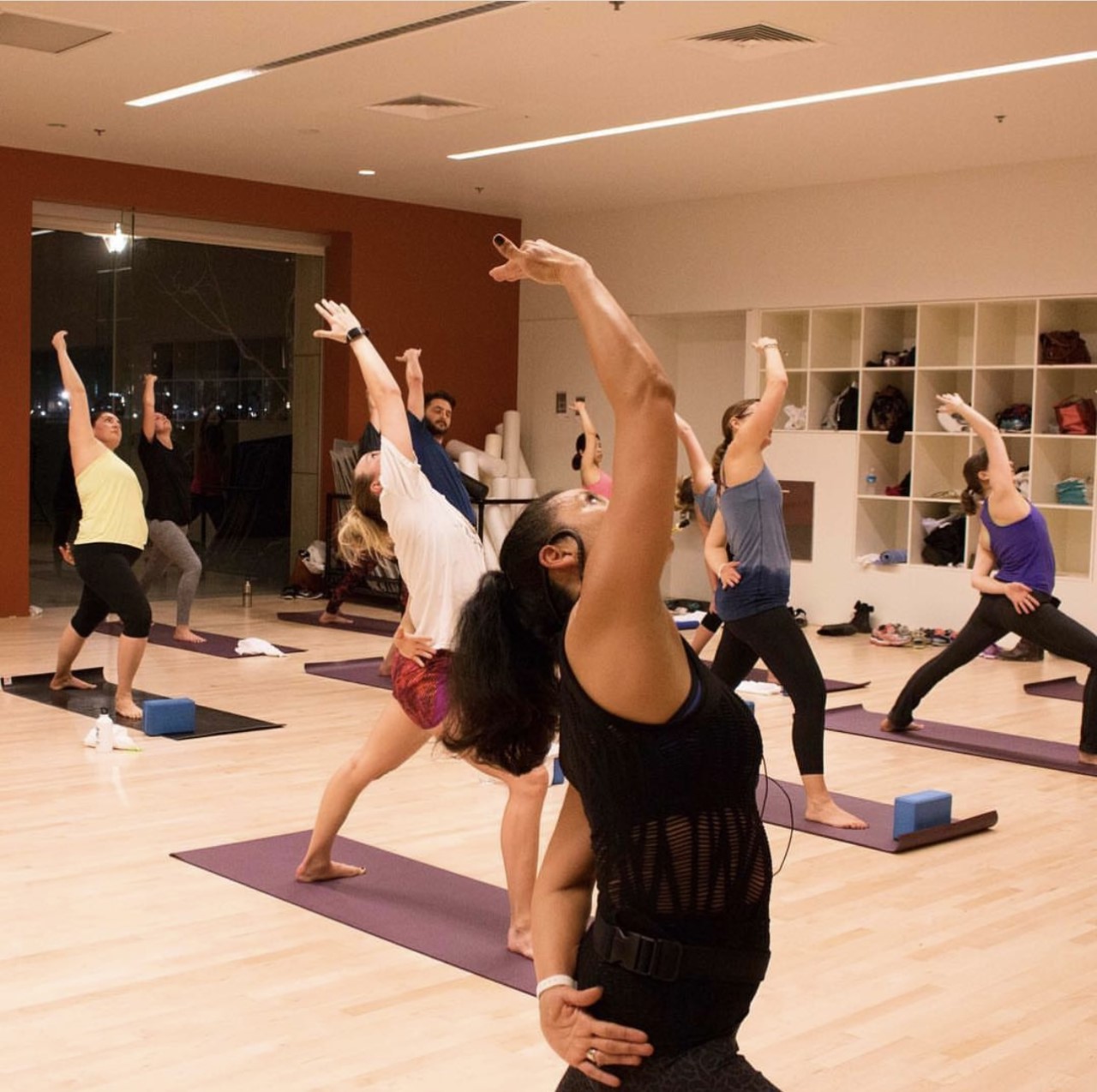In recent years the idea of mind and body connection has crept into all areas of the fitness industry. It seems like every class and piece of equipment encourages this elusive connection, yet many don’t understand it or find it gimmicky.
In the field of medicine, mind and body connection is a heavily studied subject and can be illustrated by stress, a mind response, which has very real physical impacts - gastrointestinal and sleep disorders, to name a few. Most have experienced this tandem, if you have not, what’s your secret to stress management?
Now that we have established that a connection exists, how do we conjure it during workouts? We asked our fitness guru, expert, buff–UCSF Fitness and Recreation Group Fitness Manager Gerri Nuval–to break it down.
 Nuval, in the foreground, leading a yoga class.
Nuval, in the foreground, leading a yoga class.
Repeat movements in Yoga support mind and body connection.
What's a mind and body connection?
The mind-body connection links a person's thoughts, attitudes, and behaviors to their physical health.
The mind and the body are the greatest tools we possess to achieve positive wellbeing. We must learn how to read and use it as part of treatment and prevention of physical and mental illness.
How do you achieve it during exercise?
I can describe how I achieve it while running outside.
About 30 minutes into my run, I start getting into the zone. Every three steps I take, a breath coincides. I pay attention to physical sensations, thoughts, and emotions. While taking in the surroundings, I focus inward and mentally scan every inch of my body as I run. I pay close attention to how different parts of my body are feeling. With practice, I no longer need to think about being inwardly present when I exercise, it comes naturally.
By the way: in the above image, Nuval is pictured on the right running the Nike Marathon.
What are the benefits?
A strong mind and body connection strengthens your immune system and your tolerance for stress. It can also lower your blood pressure, and decrease anxiety and fatigue while improving your digestion, pain management, memory, and attention span.
One example of this mind and body integration is when you decide to sit by the fire on a cold morning, cuddled up in a warm blanket and some tea. This translates from a physical sensation of heat to an emotional feeling of security and happiness.
Using running as an example, some reasons to practice mindful breathing are:
- Achieve a state of flow or total immersion - “run the mile you are in” approach
- Experience less stress and enhanced performance by freeing yourself of distractions
- Concentrate more on form and stride through breathing. Once the chatter is gone, you are less worried about how far you have left to go.
- Recover faster
- Decrease the risk of injury
- Achieve deep thoughts and meditation, therefore, helping with problem-solving.
What are the best workouts/classes to practice mind and body connection?
While most believe that Yoga, Meditation, Pilates, or Tai Chi are the best in creating a strong mind-to-body connection, one can achieve this in any exercise, where a thoughtful breathing technique is used. The first time I found my own connection was when I was training for the Maui Marathon! I always feel really relaxed and accomplished after a long run.
 Nuval teaching a spin class on the roof of the Rutter Center Building, UCSF.
Nuval teaching a spin class on the roof of the Rutter Center Building, UCSF.
Which UCSF Fitness and Recreation classes would you recommend to someone interested in finding mind and body connection?
Classes offered at UCSF fitness centers that help with mindfulness are:
- Hatha Yoga
- Vinyasa Yoga
- Stretch and Meditation
- Power Yoga
- Melt Method®
- Pilates Mat or Pilates Reformer
- Spinning®
- Barre Assets